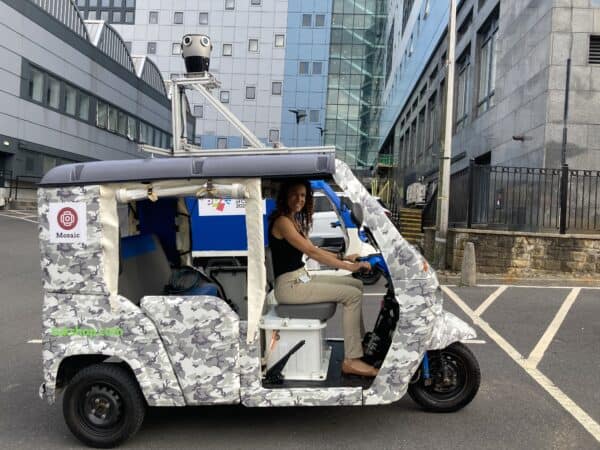Check out 7 Smart Cities in the World that are Stepping Up in Big Ways
What are Smart Cities
Let’s start off on the right foot and make sure we’re seeing eye to eye. ‘Smart City’ or ‘Smart Cities’ are terms often thrown around without many people truly understanding the true context. While we might have a slightly futuristic and sci-fi fantasy conception in our imagination, in some ways, smart cities are a bit more down to earth than that. But no less impressive and no less necessary in driving us into the future.
Definition of Smart Cities
The most concise definition of Smart Cities is an urban area which uses a combination of sensors to collect data; the data gives insights to the government; and the government reacts in a timely or immediate manner. But here are a few more details to fill in the how this all happens:
- Use electronic methods, cameras, software, and sensors to collect data about that particular area
- Sense of the environment of the city
- Collect and analyze mass quantities of data from multiple industries at once
- Gain insights into managing assets, resources and services
- Share information more readily with residents
- Interact directly with both community and city infrastructure
- Monitor and manage urban flows
- Respond in real-time to demands for resources and services
- Perform actions or deploy services automatically based on need
Data collected by Smart Cities
Through the use of thousands of sensors installed throughout the city such as cameras, LiDAR, radar, radio occlusion, motion sensors, and imaging spectrometer, governments can gather data related to:
- Traffic and transportation flows
- Usage of utilities
- Water supply networks
- Waste removal system
- Crime
- The condition of assets such as schools, hospitals, libraries, etc
Objectives of Smart Cities
The major objective of smart cities in the world is to improve the lives of their residents and local businesses by making urban planning decisions and communication which are more enjoyable, efficient and sustainable (environmentally and economically in the long-run). This includes:
- Provide land-use optimization
- Smart use / geofencing data
- Replicate design plans
- Audit progress
- Improve both the quality of government services and citizen welfare
- Simulate mobility and traffic
- Monitor climate change
- Submit building permits
- Analyze zoning
- Reduce resource consumption, wastage and overall costs
- Effectively use energy
- Promote sustainability
- Oversee environmental and other compliance
- Enhance the quality of living for residents
What Smart Cities Need to be a Smart City
As noted in the definition of what is a Smart City, there are a few points which Smart Cities need to check off to be considered a full-fledge Smart City:
- Connectivity: are there multiple devices which are connected and in communication with one another?
- Data: are those devices and those connections generating data which is being or will be analyzed?
- Government involvement: Is a governmental entity involved with processing these data?
Technologies necessary for Smart Cities
The most important technologies necessary for Smart Cities are:
- Information and communications technology (ICT): sensors and machines that connect telecommunications (telephone lines and wireless signals), computers, and software
- Connected physical devices using the Internet of Things (IoT) network: constant and immediate transmission of data through the use of wireless technology and the cloud; data is received, analyzed and acted upon to optimize the cities functionality
- Geographical information systems (GIS): for future planning, mapping, city development, as well as better manage utilities such as energy consumption, water waste and treatment
Smart Cities and Digital Twins
As promised in our last article about Digital Twins, we’d like to draw the connection between these two (sometimes) overused or overhyped terms. Both of these terms are thrown around a lot quite often in politics and the media without proper context or understanding.
As we explored in our previous insight into Digital Twins, a digital twin is, ‘the effortless integration of data between a physical and virtual machine in either direction.’
This ties in very nicely with the efforts to develop a Smart City, as ICT and IoT allow for the intercommunication between the real world and the digital twin. And with this reciprocal relationship, governments are empowered to react quicker and with better understanding of the population within the city and the services needed. They are able to take the information they collect and test, simulate, predict, and forecast new methods of urban life, for the betterment of residents and the infrastructure around them at a faster pace than ever before.
Urban planning can become one based on the most recent data affecting the layout and usage of the city. Governments are and will be able to reimagine urban planning in regards to population growth and make decisions about how and where to build or maintain infrastructure such as
- New hospitals, schools, parks, or green spaces
- Transportation (both public and private traffic)
- Street network
- Pedestrian areas
- Residential areas
In short, Digital Twins are a living testbed with which governments can test scenarios, as well as analyze and learn from the environment for efficient energy use, land use, and time saving techniques.
What are the ‘smartest’ Smart Cities in the world?
There are a significant number of researchers, organizations, and academics who spend a considerable amount of time defining the factors necessary to then rank the ‘smartest’ Smart Cities.
We did not and do not want to even begin to try and compete with the likes of the Global Cities Index, Financial Index or Quality of Living City Ranking because we’ll leave the professionals to do their jobs, while we do ours (check out more about Mosaic here).
We will only point you in the right direction if you are looking for a complete listing according to highly analyzed data.
One of the most well-known of these indicators is the highly-acclaimed IESE Cities in Motion Index (CIMI), which for 7 consecutive years has been ranking Smart Cities of the world. They recently scored 174 cities across 80 countries, using 101 indicators, which fall into one of 9 dimensions: environment, governance, social cohesion, international projection, technology, urban planning, mobility and transportation, human capital, and economy.
They offer some great insight into where these cities are geographically distributed across the globe. As you can see, most of the cities congregate in Europe, with small pockets in eastern Asia as well as both the Atlantic and Pacific coasts in North America.
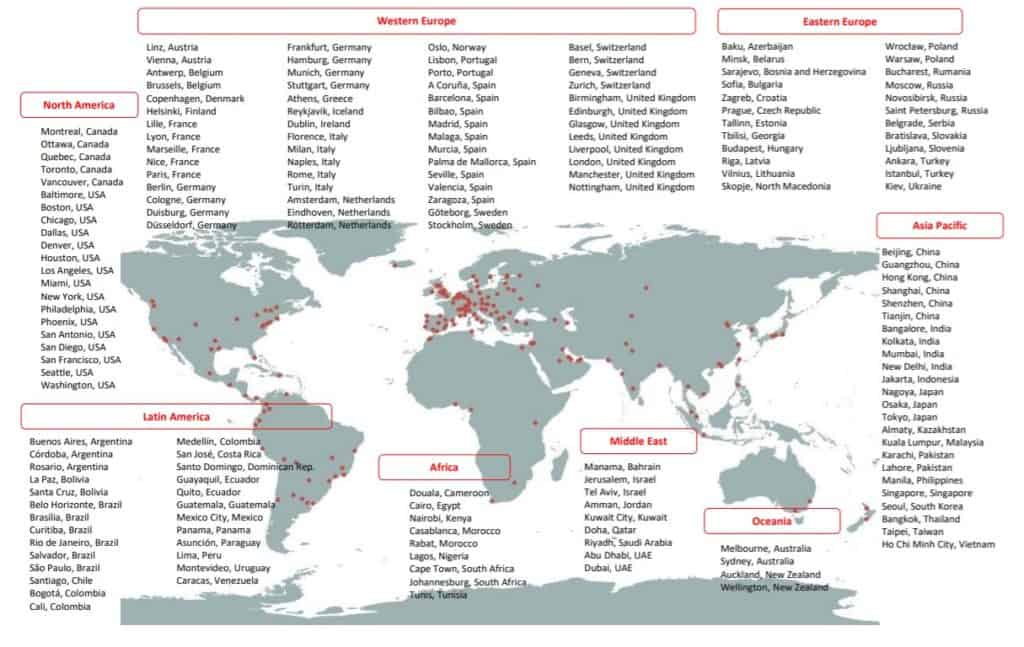
Below is a compilation by IESE of some of the more notable ranking indexes compared to the CIMI ranking system. Many of these studies and analyses have likely invested hundreds of hours and thousands upon thousands of dollars in determining which smart cities of the world deserve to be in the ‘Top 10’ or ‘Top 50’ or even ‘Top 100’ Smart Cities. So definitely take a look at their selections if you are looking for the smartest cities in the world.
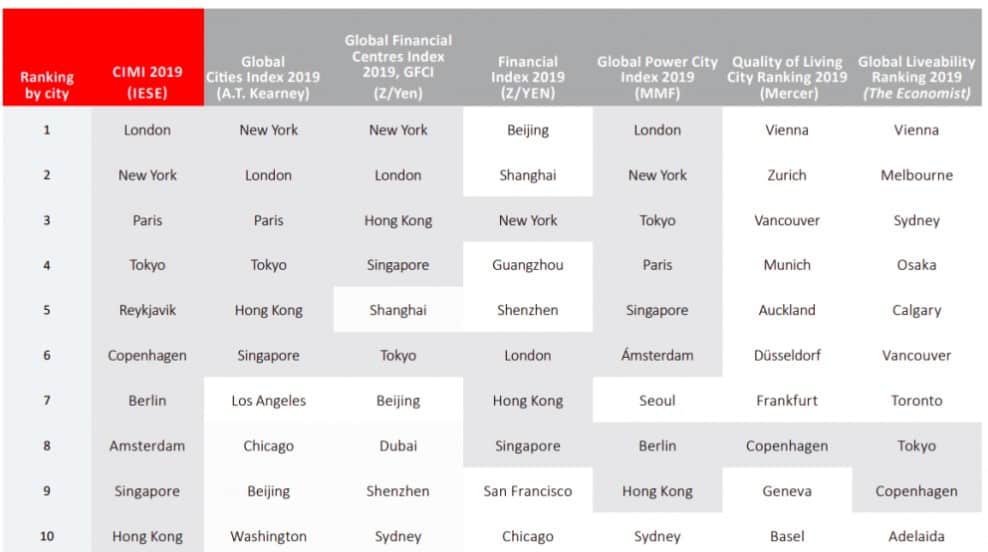
You will note that many of the same cities show up in multiple indexes, which is to be expected and confirms that those cities belong in those lists. The most frequent occurrences are London, New York City, Paris, Tokyo, Sydney, Copenhagen and Singapore.
Another good source is Smart City Governments which has published a very extensive list of the top 50 smart cities for the years 2020 and 2021. This is a brief look at their top 10:
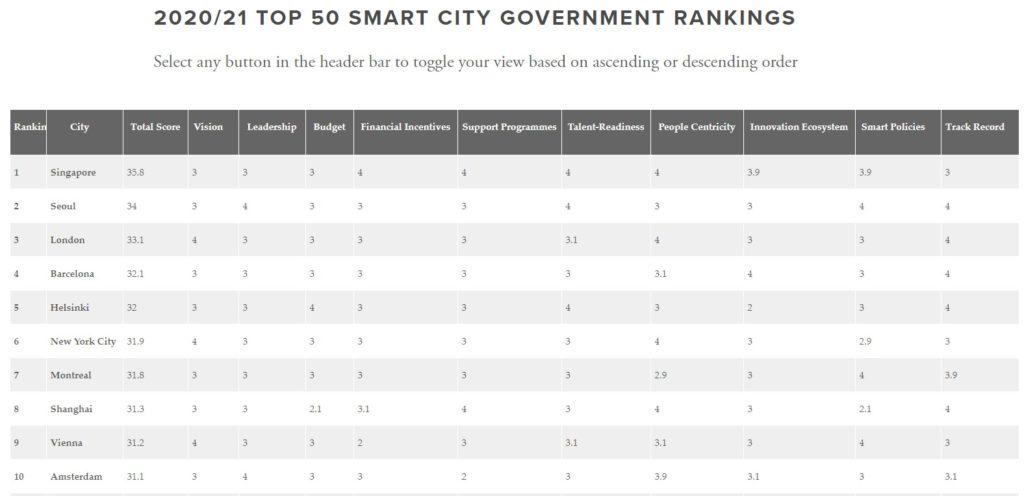
This ranking system shows you how they determined the final ranking, with such factors as leadership, budget, and smart policies. At the top of the list is Singapore at number one, followed by Seoul, London, and Barcelona.
Examples of Smart Cities in the World
We wanted to take our time (and your time too) to highlight some lesser-known smart cities of the world, rather than the ones that always garner attention. These cities have been working hard to implement Smart City solutions of varying degrees, preparing their urban zones for the future and improving the lives of residents and businesses.
So rather than a ‘Top 10,’ we’ve decided to bring you one example from each continent in the world. Going with the American standard, we’re counting 7 continents but as Antarctica doesn’t have any cities, we’ve selected an additional one with a special meaning for us here at Mosaic. Stay tuned till the end to find out which one and why it made the list.
1. Africa: Cape Town, South Africa
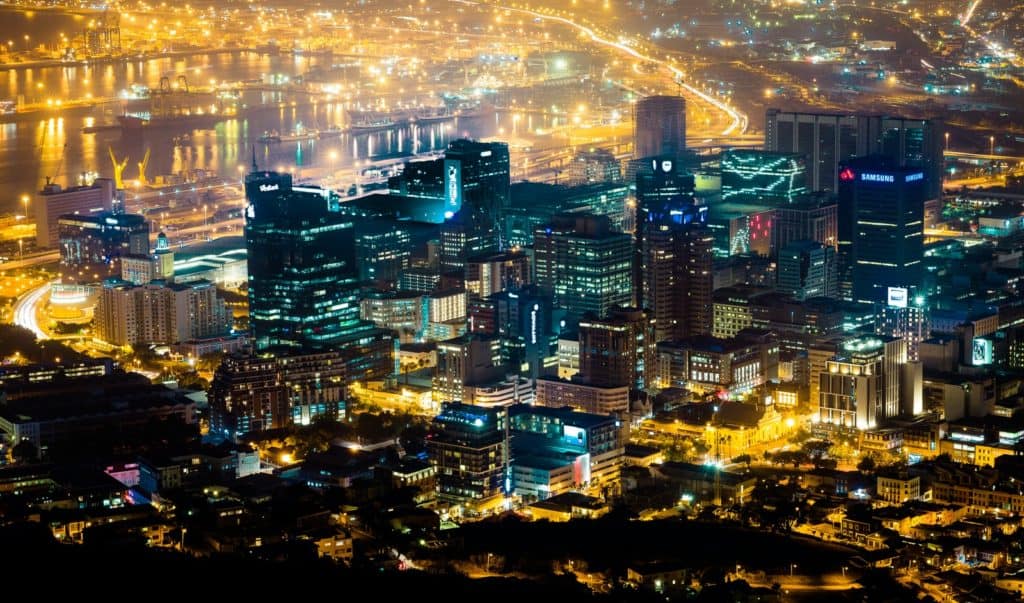
Ways Cape Town is becoming a Smart City
- Improving emergency response with real-time data efforts, including forming an integrated public safety solution
- Building a Fire Management Portal which overlaps fire incident data with historical weather maps to predict fire incidents
- Developing an open data portal
- Offering citizens free WIFI on city buses
- Using remote utilities meter reading that has reduced water usage and energy consumption by 10%
2. Asia: Ho Chi Minh, Vietnam
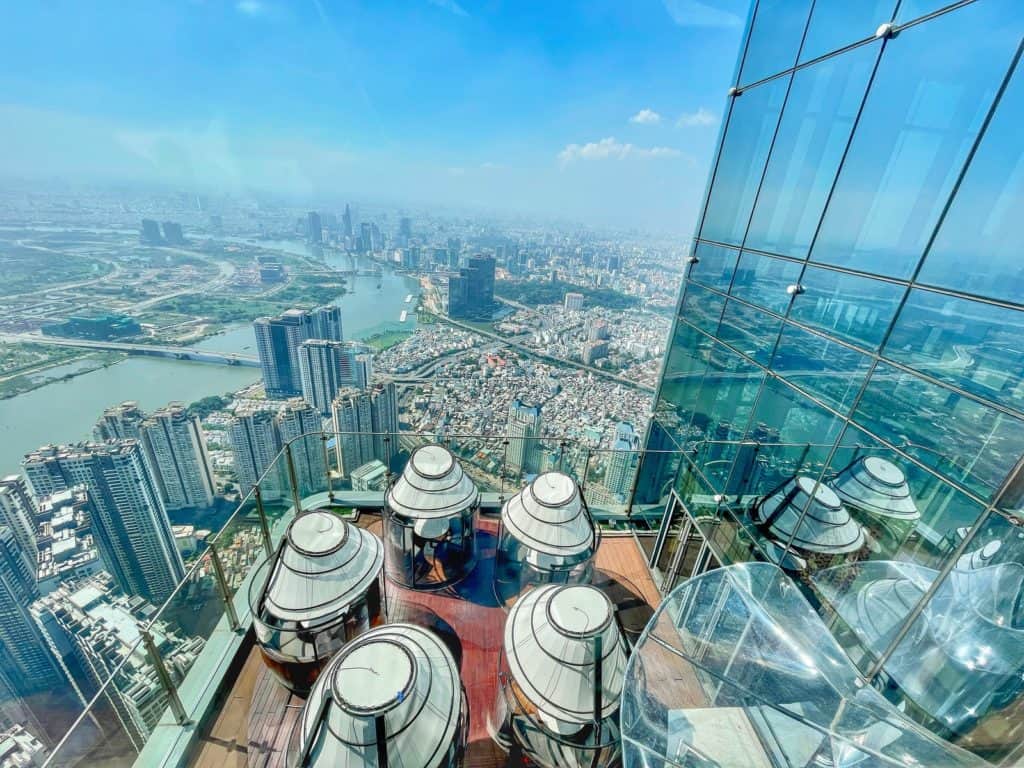
Ways Ho Chi Minh is becoming a Smart City
- Generating a shared database, and database portal, which integrates data from many of the city’s agencies and departments, such as foreign and public investment, education, healthcare, and land use
- Developing an Intelligent Operating Center which collects real-time urban data from over 1,500 cameras located in the departments of public security, education, health and transport
- Creating a center for socio-economic forecasts and simulations
- Utilizing Intelligent construction via an intelligent system of motion sensors to save energy during non-peak hours
- Planning for the future includes plans to build a blockchain infrastructure to be used for communications, energy, transportation, payments, public services, and urban management
3. Europe: Tallinn, Estonia
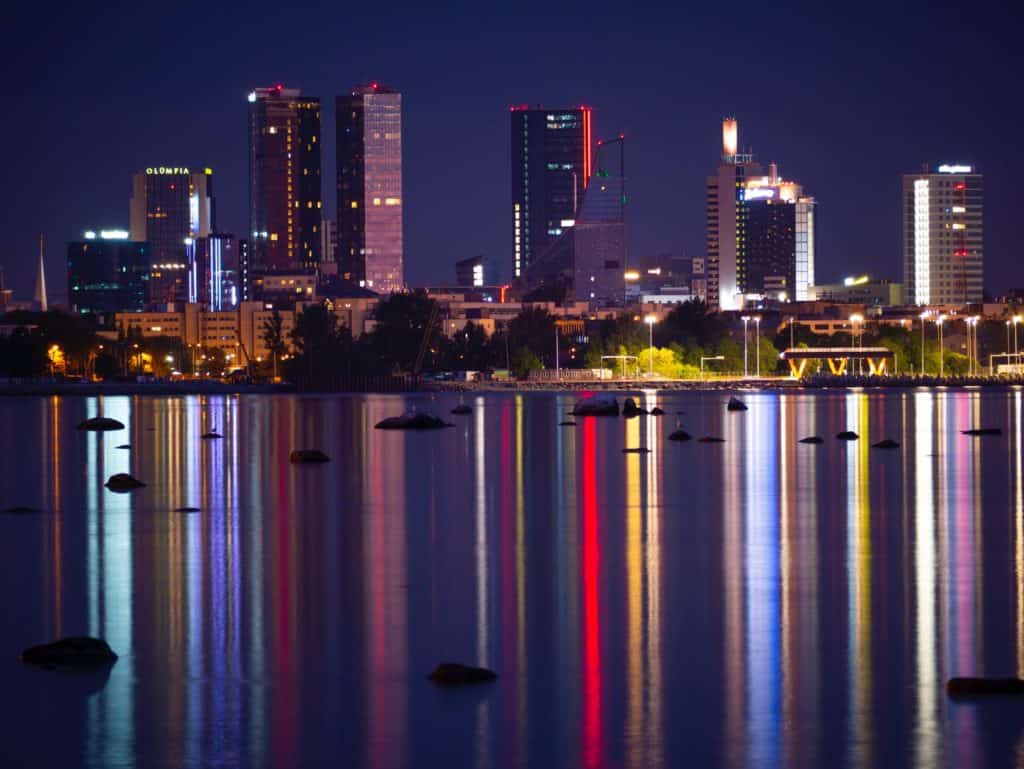
Ways Tallinn is becoming a Smart City
- Increasing citizens’ accessibility to WIFI, e-services and open source data
- Coordinating citizen-based decision-making and urban planning with a digital planning register
- Easing and reducing unnecessary administrative tasks for citizens and government employees through the X-road programme which facilitates communication between various governmental open databases
- Designing Tallinnovation: an engagement platform for start-ups, smart city solution providers and seekers
- City planning with BIM (Building Information Management) and VDC (Virtual Design and Construction) methods
- Collecting environmental and traffic data through 900 batteries and solar panel sensors attached to street lighting posts
- Monitoring urban air and measuring traffic flows
- Developing self-driving snow removal bots, self-driving electrical minibuses , autonomous delivery, and autonomous transport boats
4. North America: Montreal, Canada
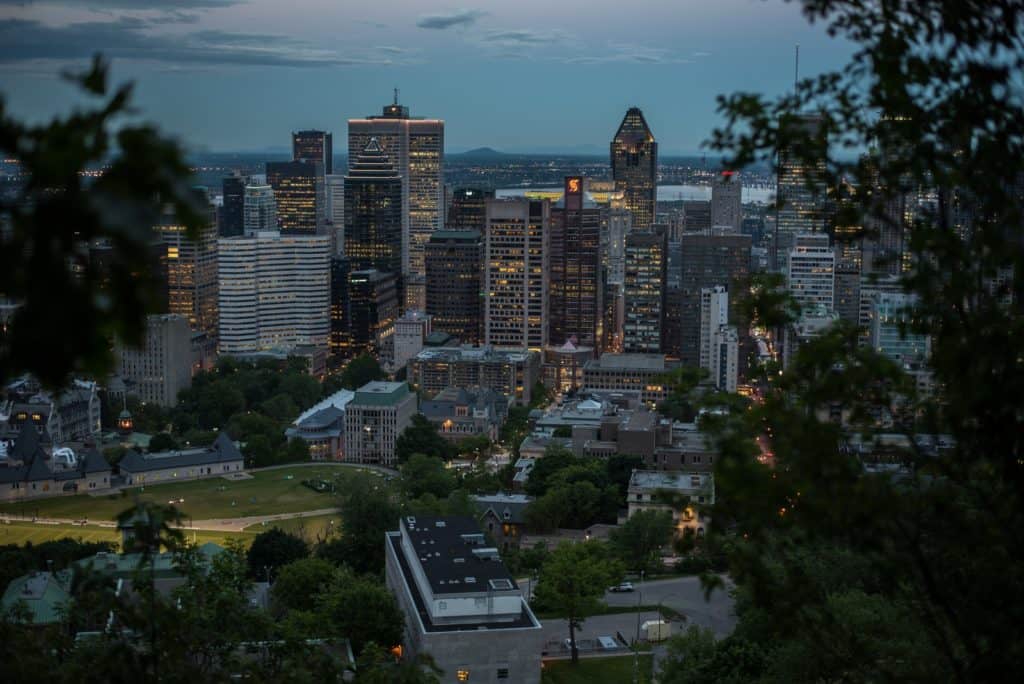
Ways Montreal is becoming a Smart City
- Using LiDAR , drones and satellites to maintain and manage resources, such as road infrastructure. i.e. remote identification of a small pothole will automatically summon a repair crew
- Reducing commute time by 15-20% through the use of over 500 traffic camera and 700 smart signals which can prioritize public transportation
- Allowing easier access to quality food for vulnerable populations through the implementation of an integrated local food system
5. Oceania: Wellington, New Zealand
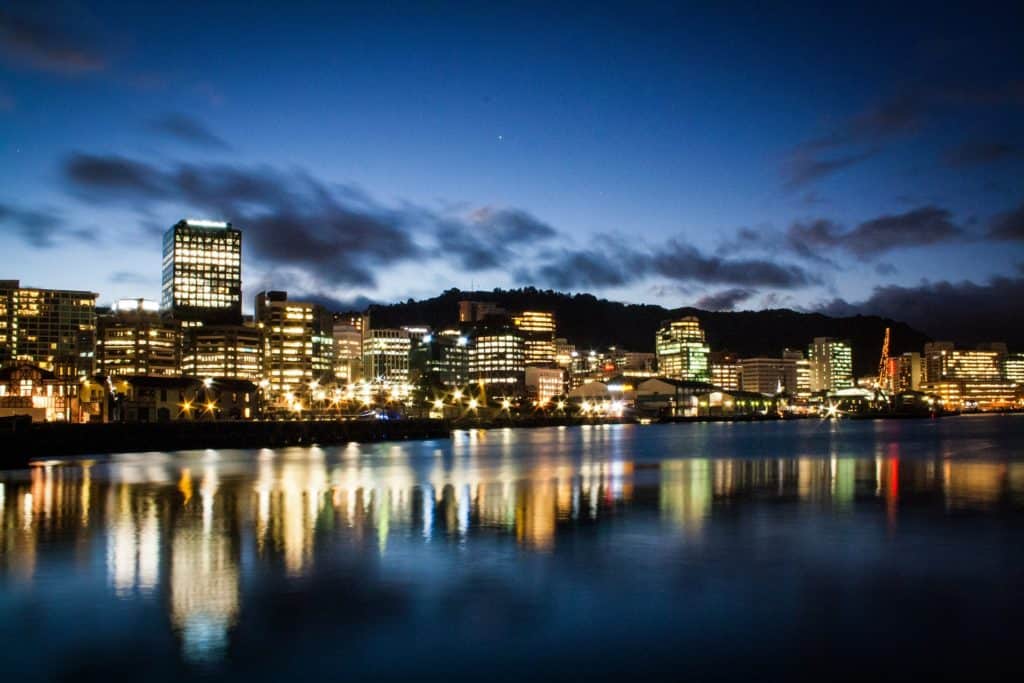
Ways Wellington is becoming a Smart City
- The KITE Smart Sensing Platform uses IoT and remote sensors to understand pedestrian dynamics, environmental metrics, and buildings’ performance during earthquakes
- Enabling data sharing through open platforms to ease communication between agencies, aggregate data, and create VR experiences that make data accessible, understandable and useful
- Fostering Civic Hacking communities in order to create new citizen-made websites, apps, and services with city data
Developing a smart grid strategy which utilizes sensors to reduce network expenditure and develop revenue growth opportunities
6. South America: Buenos Aires, Argentina
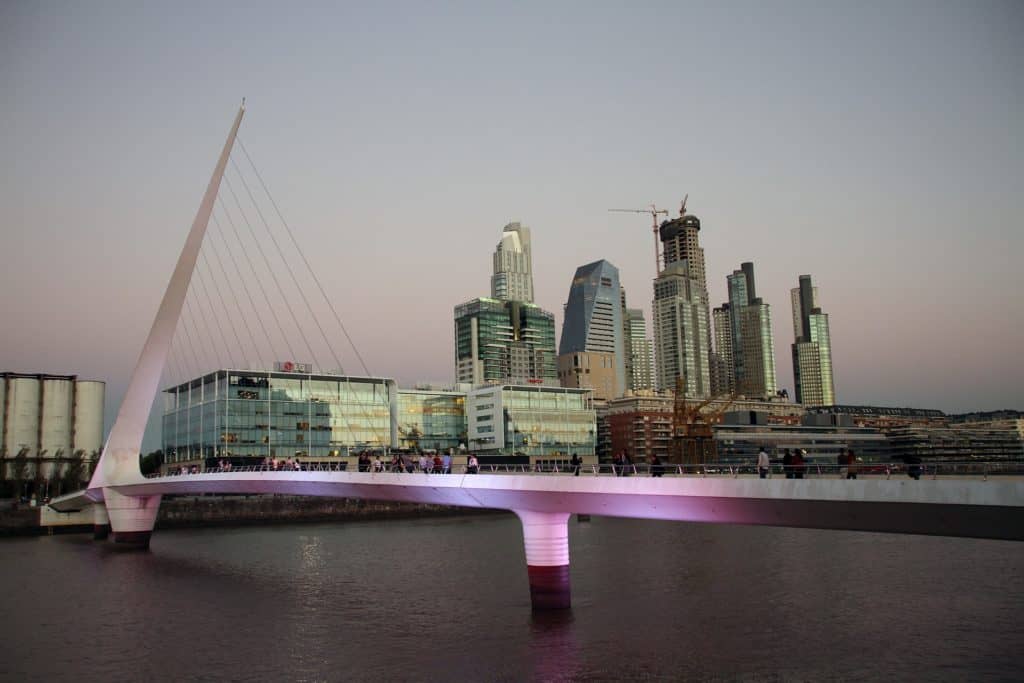
Ways Buenos Aires is becoming a Smart City
- Launching a city-wide app which allows residents to send complaints with GIS technology, which were then sent to the nearest vendor to resolve and later validate in much the same way (once a 2 year process to resolve)
- Installing and operating remote sensors in the sewage drains which give data concerning the speed, direction and level of water to predict floods
- Fostering efficient communication channels to allow the government to communicate with residents regarding services
- Creating a more sustainable city with smart traffic and lighting sensors
7. Surprise! Number 51 – Rotterdam, Netherlands
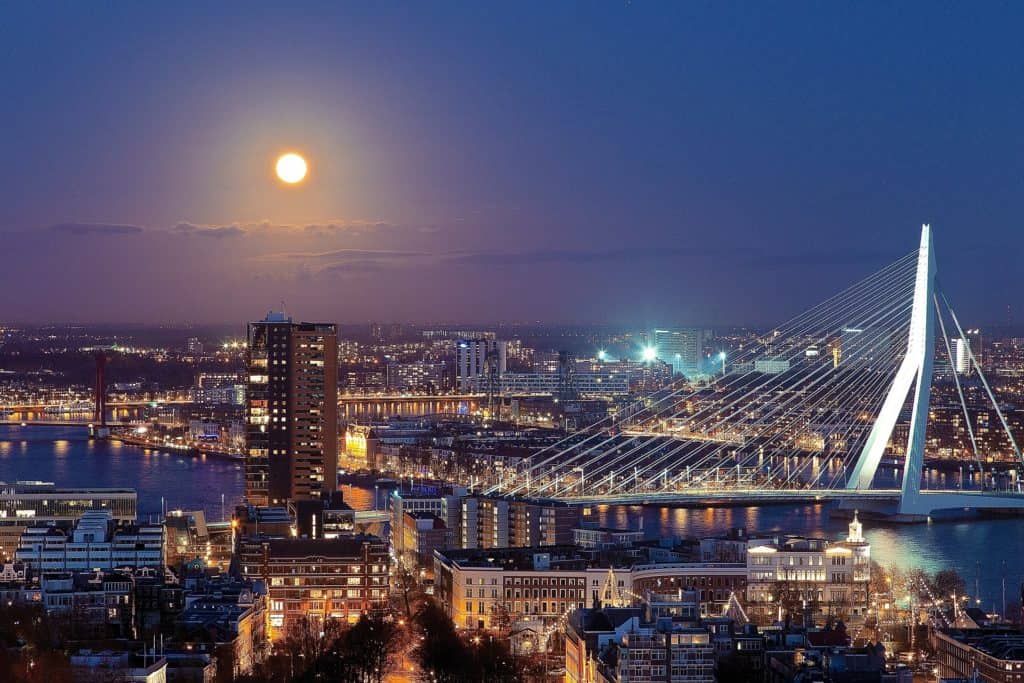
(we couldn’t resist and went with our lucky number ‘51’ for the Mosaic 51 camera, the first in our line of 360-degree cameras)
Ways Rotterdam is becoming a Smart City
- Rotterdam Smart City Planner implements practical solutions for city planning, analyzing data to solve multiple problems at once. i.e. developing water-gardens to solve both water storage and lack of public recreation areas
- Fostering smart city projects through the Next Economy initiative. i.e. city lighting development program, integrated water management, and intelligent household waste collection (including a trash-eating aquadrone force – check out this video for some great PR at work)
- Inventing flood prevention with a ‘green-blue grid’ solution: a combination of green design and water tanks on rooftops in the city, equipped with electronic drain valves that can be opened and closed remotely.
Our takeaway
And there you have it – 7 Smart Cities in the world which are making their urban areas more interconnected between citizens and their governments, improving the efficient use of energy and infrastructure, and creating more sustainable environments.
If nothing else, COVID-19 made us aware how important it is that we have Smart City features in place so that citizens can easily access certain resources. Many families found themselves without adequate WIFI for their children to study from home. Migrants saw their paperwork put on hold while applying for visas or residency permits because many government offices worked strictly by visiting in person. And governments often found themselves without the means of efficiently communicating to their citizens the latest updates to coronavirus measures.
Many of these issues and more could have (and have since) been solved by future implementation of smart city ideas and technologies. Hopefully our cities will be better prepared if and when the next global pandemic arrives.











